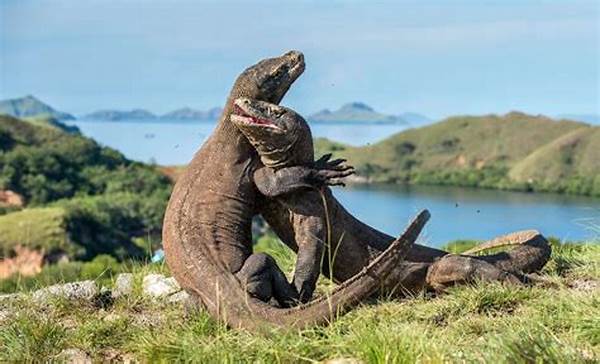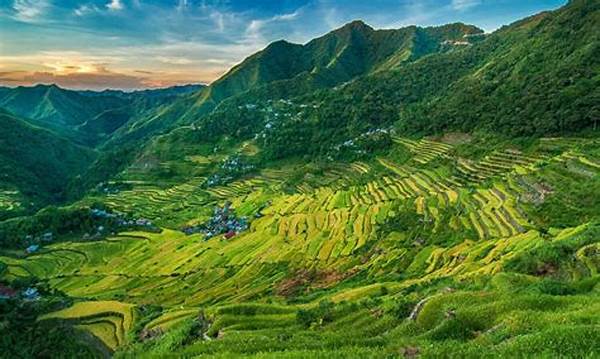Welcome, adventurers and aspiring zoologists! If you’re looking to marvel at one of the world’s most intriguing creatures, the Komodo dragon, you’re in the right place. These prehistoric-looking giants have fascinated wildlife enthusiasts and researchers alike. Found exclusively in a select few Indonesian national parks, Komodo dragons offer a unique spectacle of nature. Visiting these parks is more than just a trip—it’s an unforgettable experience that combines adventure, education, and the chance to witness a living relic from a time long past.
Read More : Tour Of Phi Phi Islands In Thailand By Speedboat
Picture this: You’re standing on the dry terrain of Rinca Island, hearing the crunch of leaves under your boots, when suddenly, a Komodo dragon graces you with its commanding presence. It’s a humbling reminder that nature’s wonders are just a plane ride away. Who knew that such an astonishing encounter could be within reach? Get ready to discover the vital information on Komodo dragons in national parks, and embark on a journey that will enrich your understanding and appreciation for these ancient reptiles.
Exploring Komodo Dragons’ Natural Habitat
Komodo National Park, a UNESCO World Heritage Site, is the most renowned home of the Komodo dragons. This sprawling park encompasses several islands, primarily Komodo, Rinca, and Padar. These islands provide a sanctuary where the Komodo dragon roams freely. Protecting this habitat is crucial for the species’ survival, as the dragons rely on these specific environments for their complex life cycles.
Research conducted within the park has highlighted interesting behaviors of these dragons, such as their impressive hunting techniques and social hierarchies. This level of insight is only achievable due to careful conservation efforts and on-the-ground studies by dedicated researchers. Given their vulnerable status on the IUCN Red List, these national parks play a significant role in ensuring their continued existence.
The Economy of Komodo National Park
A visit to Komodo National Park is more than just an encounter with dragons. It’s also an opportunity to engage with the local communities who play a vital role in conserving these lands. Tourism has become a significant economic driver, offering locals consistent income through ecotourism services. Visitors often contribute to conservation funds directly, ensuring that their adventures have a lasting, positive impact.
In 2019, statistics revealed that over 176,000 tourists visited the park, showcasing the economic importance this natural wonder holds. Such figures are essential for maintaining conservation efforts and supporting local economies, providing a sustainable model of tourism that benefits both the environment and humanity.
Why Visit Komodo Dragons in Their Natural Habitat?
One might wonder why visiting Komodo dragons in their natural habitat is essential, particularly when digital resources abound. The answer lies in the tangible experience of seeing these animals in person. Witnessing a Komodo dragon basking in the sun or observing their hunting prowess brings a level of awareness and appreciation that cannot be captured through a screen.
Moreover, guided tours offer deeper insights into the biology and behavior of Komodo dragons. Local guides, often with roots in the area, share traditional tales and personal anecdotes that breathe life into the park’s history and significance. Engaging directly with the habitat offers not just a fun experience, but an educational one that cultivates a deeper empathy for our planet’s diverse ecosystems.
Conservation Challenges and Efforts
Despite being main attractions, Komodo dragons face numerous challenges, primarily habitat loss and climate change. Conservationists work tirelessly to mitigate these threats, often requiring innovative solutions like habitat restoration and increased legal protection for the parks.
Read More : Natural Tourist Attractions In Bogor Caves Exploration Trending 2025
Efforts are also made to educate visitors on sustainable tourism practices, emphasizing the importance of respecting wildlife and supporting conservation activities. This multifaceted approach ensures the survival of the Komodo dragons, securing their place in our world for future generations to enjoy and learn from.
Understanding the Role of National Parks
National parks like Komodo serve as critical buffers against extinction and biodiversity loss. They offer a controlled environment where researchers and conservationists can track and monitor the health and numbers of Komodo dragons. This setting provides invaluable data that shapes conservation policies and practices globally.
Unique Features of Komodo National Park
The Ultimate Guide to Visiting Komodo National Park
Thinking of visiting? Here’s everything you need to know to plan your adventure:
The Rich Stories of Komodo Dragons
Our world is full of extraordinary places and creatures, yet few claim the mystique of the Komodo dragon. By choosing to explore these reptiles in their natural habitats, you contribute to a global effort in understanding and preserving our planet’s incredible diversity. And who knows? Your next adventure might be the story that inspires others to embark on their own journey to witness the wonders of Komodo dragons in national parks.
—
In summary, the information on Komodo dragons in national parks serves as a significant reminder of the delicate balance between tourism, conservation, and education. Whether you’re drawn by curiosity, environmental interests, or the sheer thrill of adventure, the opportunity to witness these remarkable creatures in their natural setting is unparalleled. Embrace the adventure, and let’s work together to ensure the survival and prosperity of the Komodo dragon for generations to come!


